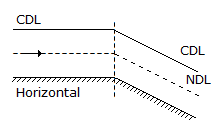Civil Engineering - UPSC Civil Service Exam Questions
Exercise : UPSC Civil Service Exam Questions - Section 1
- UPSC Civil Service Exam Questions - Section 14
- UPSC Civil Service Exam Questions - Section 27
- UPSC Civil Service Exam Questions - Section 26
- UPSC Civil Service Exam Questions - Section 25
- UPSC Civil Service Exam Questions - Section 24
- UPSC Civil Service Exam Questions - Section 23
- UPSC Civil Service Exam Questions - Section 22
- UPSC Civil Service Exam Questions - Section 21
- UPSC Civil Service Exam Questions - Section 20
- UPSC Civil Service Exam Questions - Section 19
- UPSC Civil Service Exam Questions - Section 18
- UPSC Civil Service Exam Questions - Section 17
- UPSC Civil Service Exam Questions - Section 16
- UPSC Civil Service Exam Questions - Section 15
- UPSC Civil Service Exam Questions - Section 1
- UPSC Civil Service Exam Questions - Section 13
- UPSC Civil Service Exam Questions - Section 12
- UPSC Civil Service Exam Questions - Section 11
- UPSC Civil Service Exam Questions - Section 10
- UPSC Civil Service Exam Questions - Section 9
- UPSC Civil Service Exam Questions - Section 8
- UPSC Civil Service Exam Questions - Section 7
- UPSC Civil Service Exam Questions - Section 6
- UPSC Civil Service Exam Questions - Section 5
- UPSC Civil Service Exam Questions - Section 4
- UPSC Civil Service Exam Questions - Section 3
- UPSC Civil Service Exam Questions - Section 2
41.
Which are the critical activities of the bar chart shown above ?


42.
What is the effective height of a free-standing masonry wall for the purpose of computing slenderness ratio ?
43.
To generate 10, 000 hp under a head of 81 m while working at a speed of 500 rpirt, the turbine of choice would be
44.
Consider the following statements :
Sand in mortar is needed for
1. decreasing the quantity of cement.
2. reducing shrinkage.
3. decreasing the surface area of the binding material.
4. increasing the strength.
Of these statements :
Sand in mortar is needed for
1. decreasing the quantity of cement.
2. reducing shrinkage.
3. decreasing the surface area of the binding material.
4. increasing the strength.
Of these statements :
45.
The given figure shows gradually varied flow in an open channel with a beak in bed slope. Types of water surface profiles occurring from left to right are


Quick links
Quantitative Aptitude
Verbal (English)
Reasoning
Programming
Interview
Placement Papers